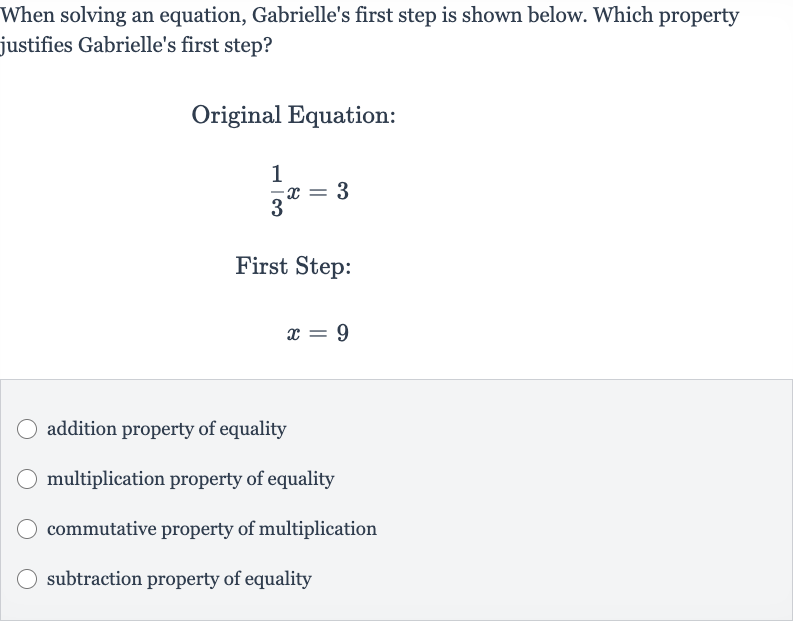AI tutor
Welcome to Bytelearn!
Let’s check out your problem:

When solving an equation, Gabrielle's first step is shown below. Which property justifies Gabrielle's first step?Original Equation:First Step:addition property of equalitymultiplication property of equalitycommutative property of multiplicationsubtraction property of equality
Full solution
Q. When solving an equation, Gabrielle's first step is shown below. Which property justifies Gabrielle's first step?Original Equation:First Step:addition property of equalitymultiplication property of equalitycommutative property of multiplicationsubtraction property of equality
- Initial Equation: Gabrielle's first step in solving the equation is to go from to . To justify this step, we need to determine which property allows us to go from the original equation to the first step. Let's analyze the step:Original Equation: First Step: To isolate , we need to eliminate the fraction that is being multiplied by . To do this, we can multiply both sides of the equation by the reciprocal of , which is . This is because multiplying by the reciprocal will cancel out the on the left side, leaving us with just .Calculation:This step is justified by the multiplication property of equality, which states that if you multiply both sides of an equation by the same nonzero number, the two sides remain equal.
More problems from Identify properties of logarithms
QuestionGet tutor help
QuestionGet tutor help
QuestionGet tutor help
QuestionGet tutor help
QuestionGet tutor help
